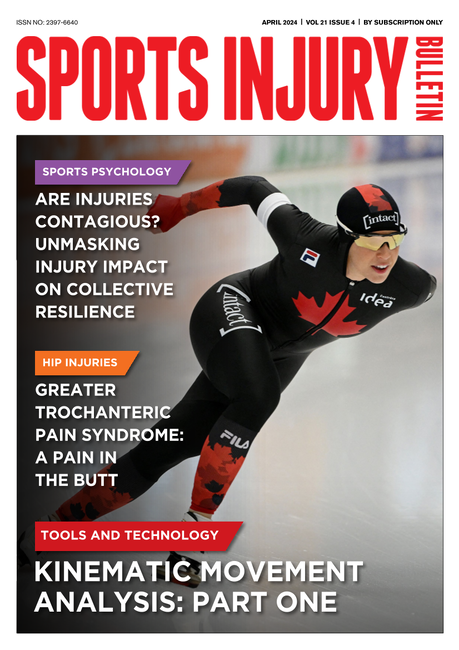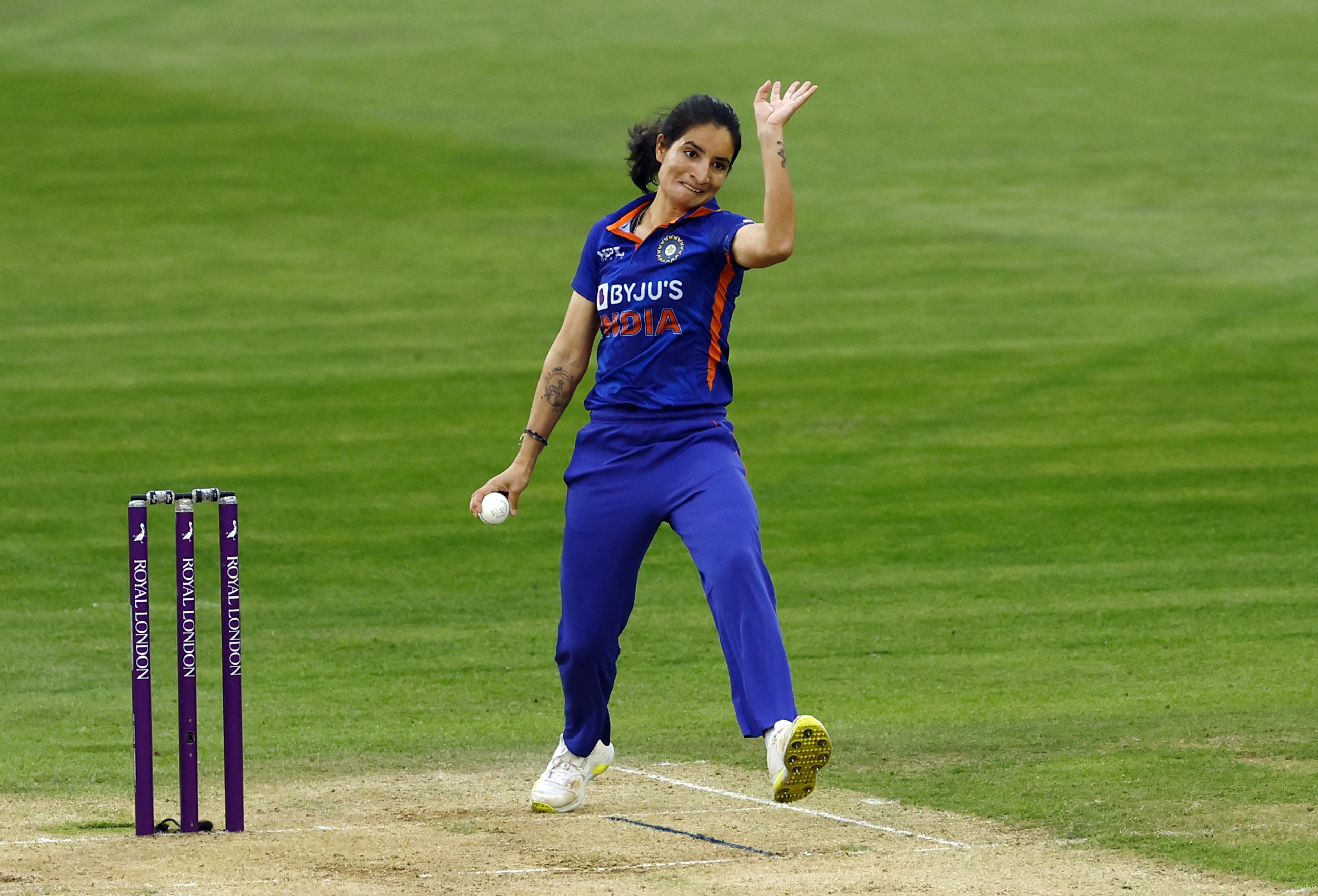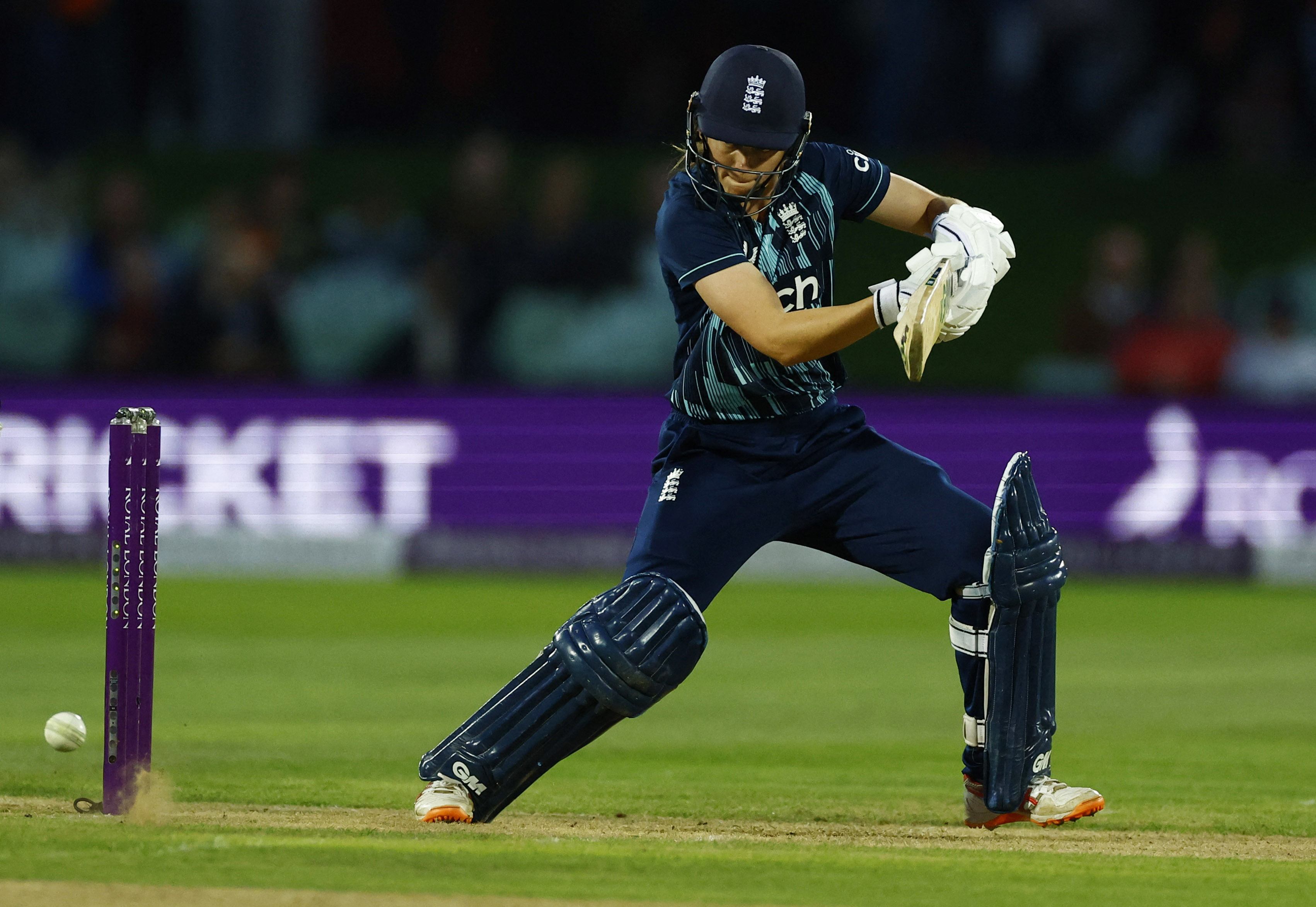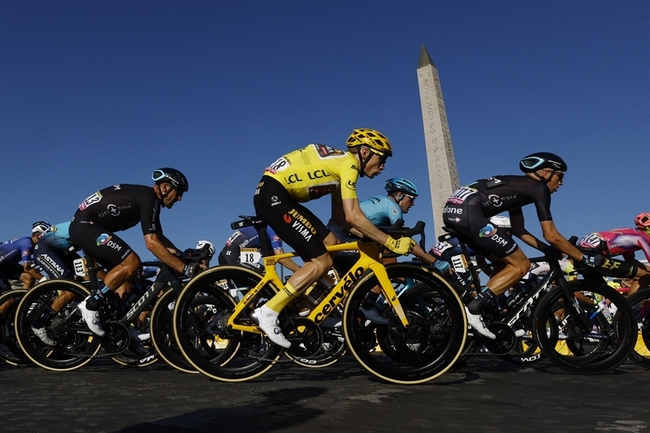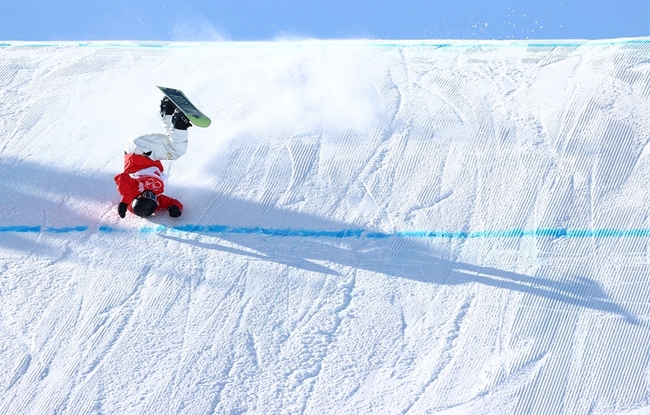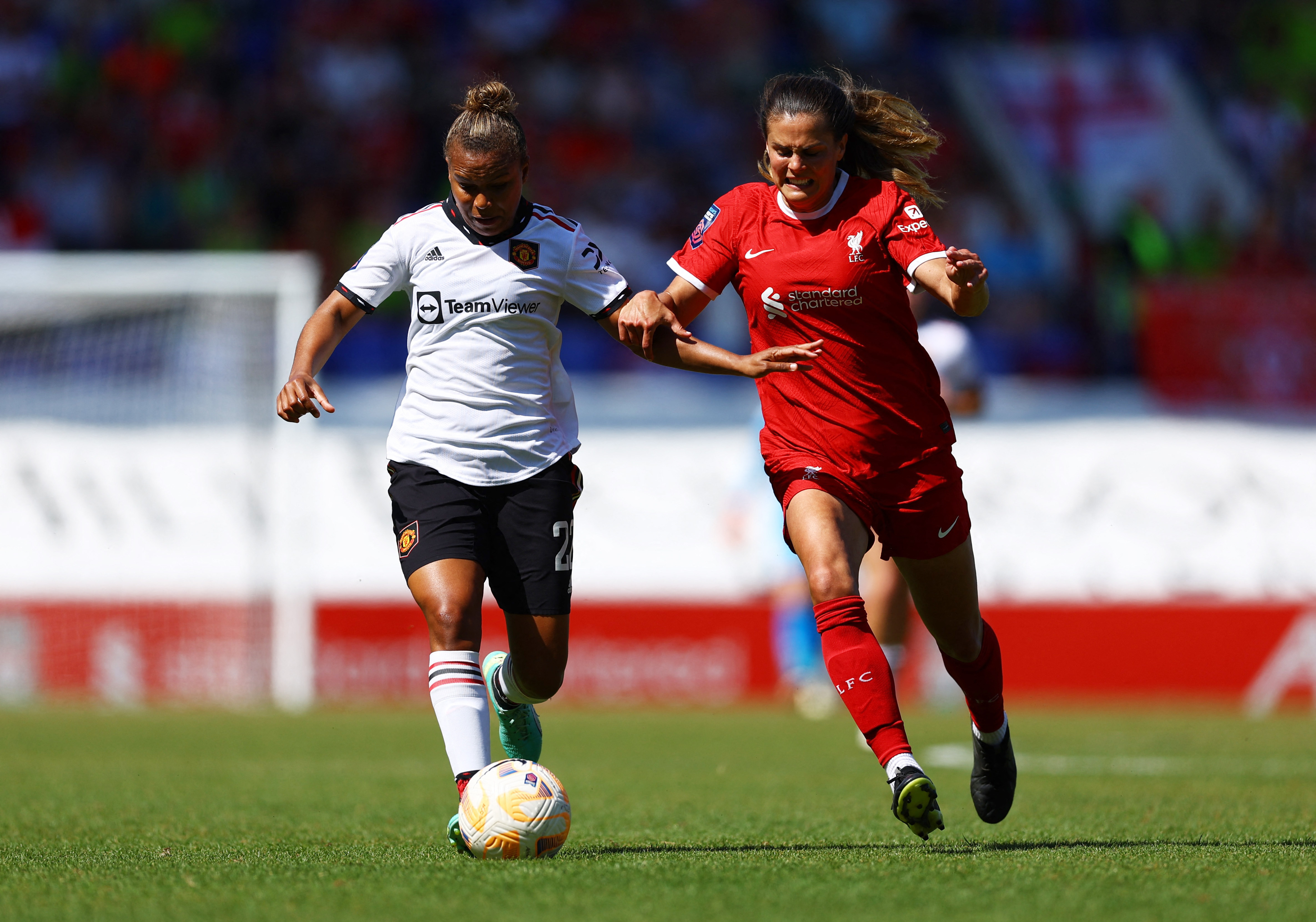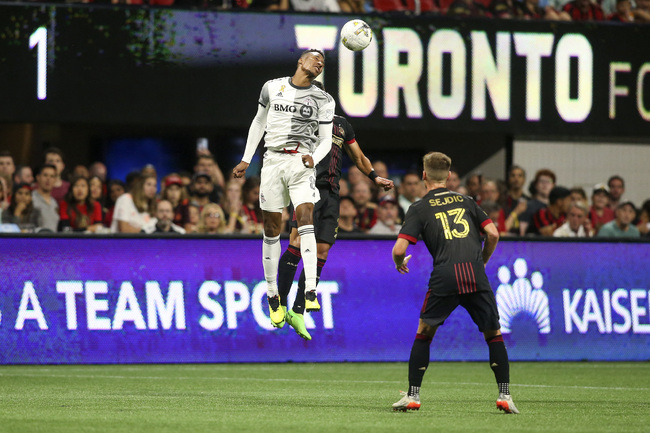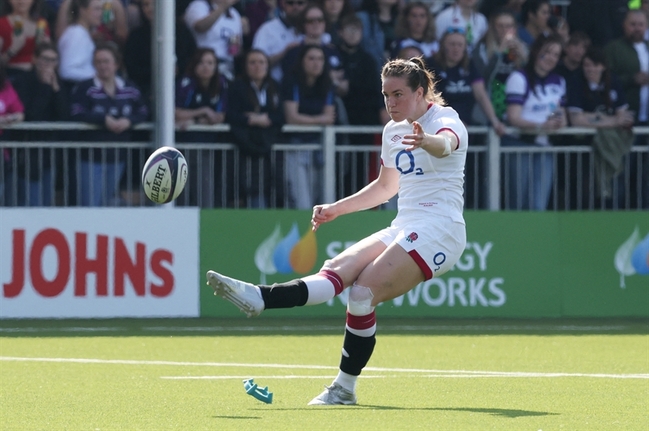Conservative management of hip avulsion injuries

In the December 2020 issue of Sports Injury Bulletin, Andrew Hamilton explored the use of imaging in the diagnosing hip and pelvic avulsion injuries and the role it plays in monitoring and managing recovery. Imaging helps make appropriate management choices since avulsions with more than 1.5cm of separation respond best to surgical repair(1). Clinicians typically recommend conservative treatment for those that fail to meet that criterion. However, there isn’t an agreed-upon approach to the rehabilitation of these injuries.
Therefore, in an attempt to develop a reliable protocol to manage avulsion injuries, researchers from Qatar documented the case of a 16-year-old male elite soccer player(1). This young athlete suffered a 7mm avulsion at his iliac crest and grade II lesions to his gluteus medius and iliacus during a soccer match. His medical team chose to manage his injury conservatively through a five-stage rehabilitation process.
Stage I: Up to day 14 post-injury
The clinicians fitted the athlete with a custom lumbosacral brace to help stabilize the injury. The patient wore this brace for the first four weeks. Stage I included rest and crutch walking with partial weight-bearing as tolerated.Stage II: Day 15-28
The patient continued to wear the brace and achieved full weight bearing (FWB) without crutches by week 4. Once the patient tolerated FWB he discontinued the use of the brace. The athlete began physical therapy treatment two weeks after the initial injury. The rehabilitation at this stage consisted of isometric or eccentric exercises of the involved muscles that attach at the pelvic crest:- Transverse Abdominis
- Internal and External Obliques
- Quadratus Lumborum
- Gluteus Medius
- Iliacus
- Tensor Fascia Lata and Sartorius
The physio guided exercises to remain within a pain-free range. This stage also emphasized the return of functional movements such as postural transitions. Some of these were from long-sitting to cross-legged sitting, seated hip twists, supine to stand, and single-leg stance. The therapist also initiated cardio training at this stage with a stationary bike and aqua jogging.
Stage III: Day 29-56
The athlete began traditional loaded concentric and eccentric exercises on the involved muscles at this stage. All exercises were progressed to single-leg stance with rotation as able to promote further trunk and pelvic stability. The clinicians introduced more functional and soccer-specific movements such as running, cutting, turning, and shuffling.Stage IV: Day 57-71
The athlete began sport-specific training with on-field tasks that challenged his agility, speed, and coordination. Activities during this time simulated in-play situations with progressive challenges as tolerated.Stage V: Day 72-110
An important component of this stage was recreating the initial mechanism of injury situation. The rehab team gave the player opportunities to gain confidence and strength in that particular maneuver and overcome any fear of reinjury. The athlete returned to play initially for 30 minutes and progressed 30 minutes more for each successive game until he could play the entire game without symptoms.Practical implications
This case study establishes an approximate timeline for return to play after an avulsion injury of the iliac crest with conservative management. The player returned to full game participation roughly 14 weeks after the initial injury. The authors break his rehab course into five stages: rest, restoration of function and transitional movements, functional rehabilitation, return to training, and return to play. Imaging played a key role in monitoring healing. All activity was kept within a pain-free range in each stage, and progression depended upon the athlete’s symptom-free response to activities.The authors point out that youth athletic skills progress alongside growth and maturation. Therefore, when younger players return to sport after an injury, their peers may have improved while they were out. Thus, rehabilitation in this population must return players to their pre-injury status and take into account advanced skill acquisition by their peers.
References
- Science and Medicine in Football. 2019 Jan;3(1):95-104.
You need to be logged in to continue reading.
Please register for limited access or take a 30-day risk-free trial of Sports Injury Bulletin to experience the full benefits of a subscription.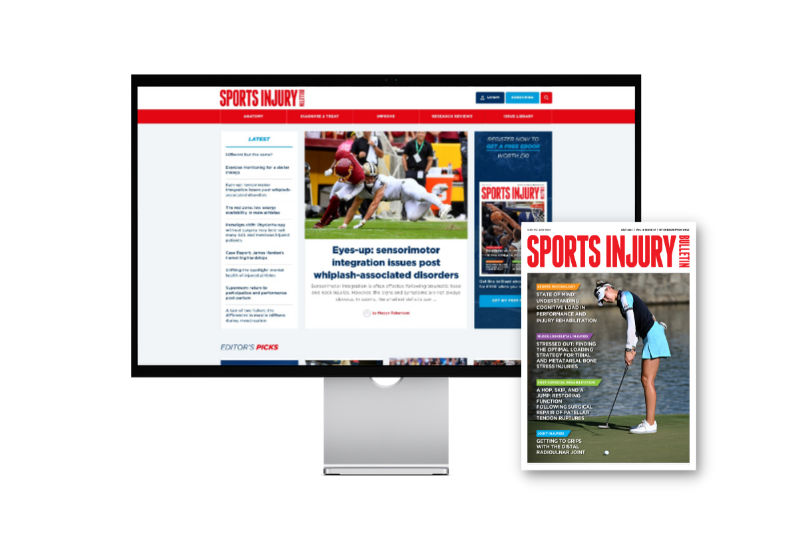 TAKE A RISK-FREE TRIAL
TAKE A RISK-FREE TRIAL
Newsletter Sign Up
Subscriber Testimonials
Dr. Alexandra Fandetti-Robin, Back & Body Chiropractic
Elspeth Cowell MSCh DpodM SRCh HCPC reg
William Hunter, Nuffield Health
Newsletter Sign Up
Coaches Testimonials
Dr. Alexandra Fandetti-Robin, Back & Body Chiropractic
Elspeth Cowell MSCh DpodM SRCh HCPC reg
William Hunter, Nuffield Health
Be at the leading edge of sports injury management
Our international team of qualified experts (see above) spend hours poring over scores of technical journals and medical papers that even the most interested professionals don't have time to read.
For 17 years, we've helped hard-working physiotherapists and sports professionals like you, overwhelmed by the vast amount of new research, bring science to their treatment. Sports Injury Bulletin is the ideal resource for practitioners too busy to cull through all the monthly journals to find meaningful and applicable studies.
*includes 3 coaching manuals
Get Inspired
All the latest techniques and approaches
Sports Injury Bulletin brings together a worldwide panel of experts – including physiotherapists, doctors, researchers and sports scientists. Together we deliver everything you need to help your clients avoid – or recover as quickly as possible from – injuries.
We strip away the scientific jargon and deliver you easy-to-follow training exercises, nutrition tips, psychological strategies and recovery programmes and exercises in plain English.


